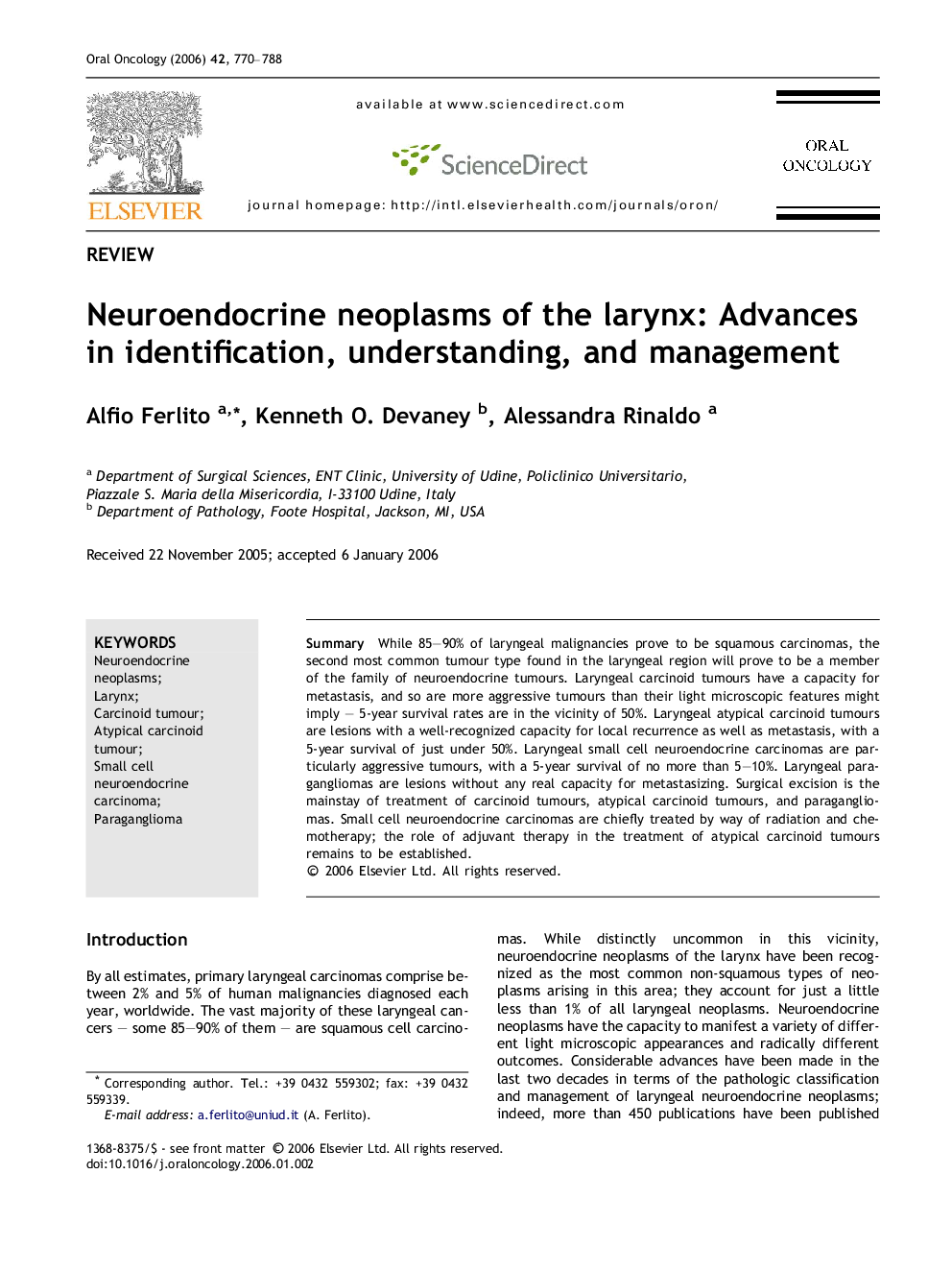| Article ID | Journal | Published Year | Pages | File Type |
|---|---|---|---|---|
| 3165980 | Oral Oncology | 2006 | 19 Pages |
SummaryWhile 85–90% of laryngeal malignancies prove to be squamous carcinomas, the second most common tumour type found in the laryngeal region will prove to be a member of the family of neuroendocrine tumours. Laryngeal carcinoid tumours have a capacity for metastasis, and so are more aggressive tumours than their light microscopic features might imply – 5-year survival rates are in the vicinity of 50%. Laryngeal atypical carcinoid tumours are lesions with a well-recognized capacity for local recurrence as well as metastasis, with a 5-year survival of just under 50%. Laryngeal small cell neuroendocrine carcinomas are particularly aggressive tumours, with a 5-year survival of no more than 5–10%. Laryngeal paragangliomas are lesions without any real capacity for metastasizing. Surgical excision is the mainstay of treatment of carcinoid tumours, atypical carcinoid tumours, and paragangliomas. Small cell neuroendocrine carcinomas are chiefly treated by way of radiation and chemotherapy; the role of adjuvant therapy in the treatment of atypical carcinoid tumours remains to be established.
